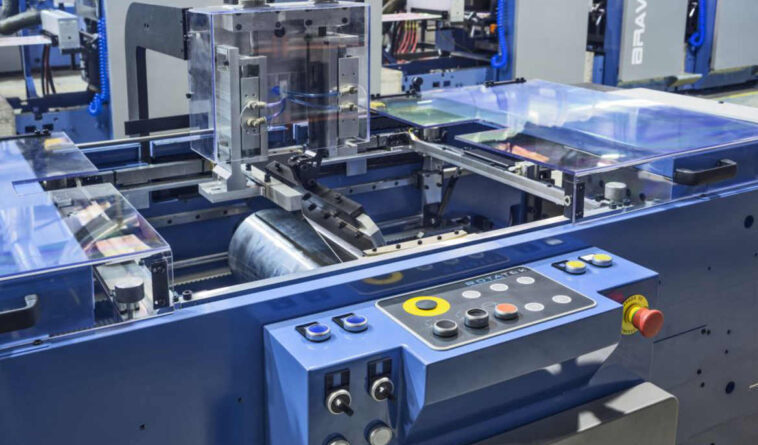Screen printing offers a very high level of detail and colour intensity beyond the reach of other techniques
The modular design of the ROTATEK machines allows the flat screen-printing unit to be integrated in-line with the semi-rotary offset presses. This unit is ideal for reproducing fine lines and full relief surfaces up to 300 microns.
One of the main advantages over other screen-printing methods is speed, as the screen advance and reverse system, equipped with a fixed scraper, reaches 4,200 cycles per hour, with a minimum print format of 200 mm and a maximum of 400 mm. The other feature which makes the flat screen-printing unit a highly interesting bet is the low cost of the printing screen when compared to the rotary system.
Our module prints on all types of materials with total accuracy and maximum inks usage, by applying the right pressure on the screen-printing scraper
Screen printing provides a very high and durable print quality, although, due to the characteristics of the ink transfer technology, it is only suitable for printing spot colours.
As the silkscreen emulsion must be in 100% positive format to record the image to be reproduced on the mesh that will transfer the ink, it is not possible to print complex compositions in terms of colour, or gradients or shadows, for example.
What are the benefits and drawbacks of flat screen printing?
Among the advantages of screen printing, we can highlight the following:
- Simplicity and savings: the printing technology is very simple, and the cost of the silkscreen, very economical compared to other systems.
- Colour intensity: as the ink filters through the silkscreen, it allows a straightforward application and very bright colours, without mixtures, in the print.
- Unlimited inks: screen printing allows the use of all types of inks and colours, including metallic and fluorescent ones.
And these are some of its disadvantages compared to other printing technologies:
- Lower speed: While Rotatek’s flatbed screen unit achieves 4,200 cycles per hour, this technology cannot compete with other printing systems in terms of production speed.
- Slow drying: since you need more ink in the prints, the drying time is longer than with other technologies.
- Lower accuracy: in those prints that require several colours, each of them must be transferred to the substrate using a different screen, so that there is a lot to be done when placing each one of them to avoid inaccuracies in the final output.
Each printing technology has its strengths and weaknesses. What is important is to know which one is the most suitable for each job. The great advantage of ROTATEK machines is that their modular configuration allows the addition of the right value-added units, such as flat screen printing, to achieve the optimum results.

